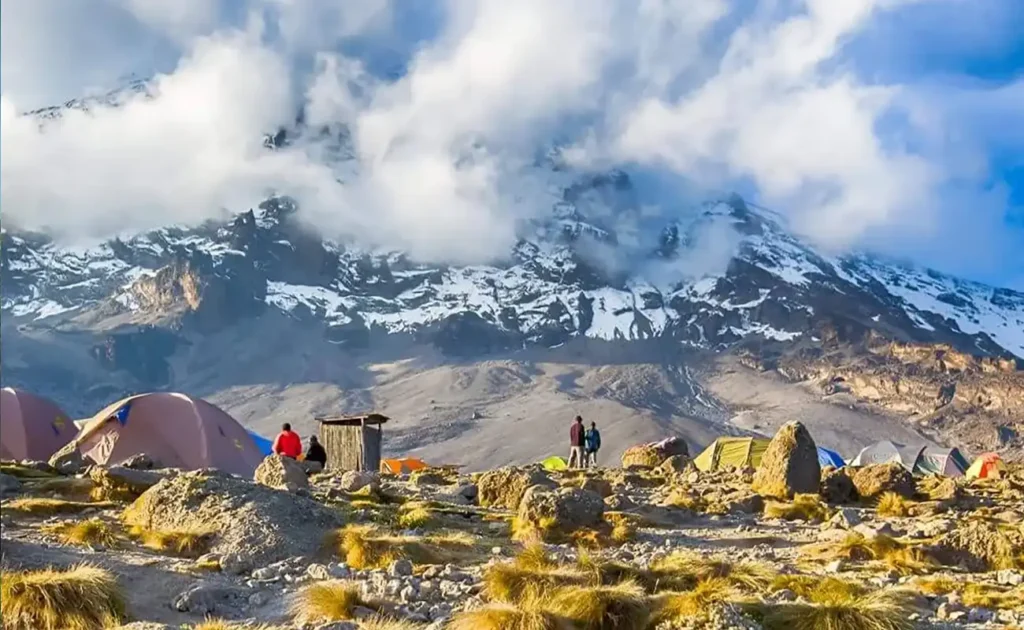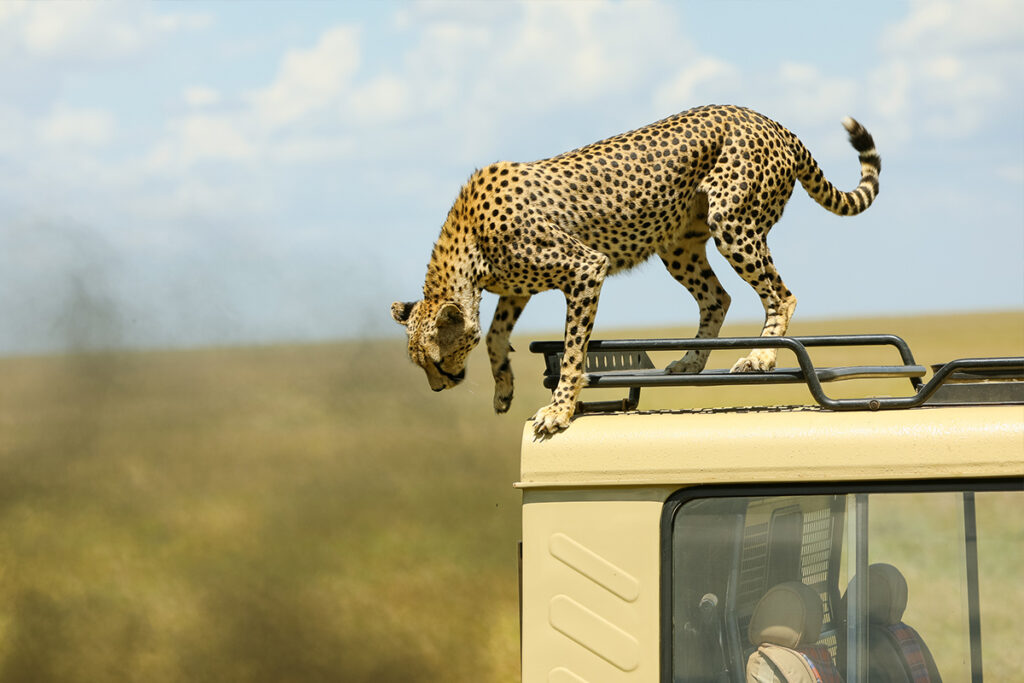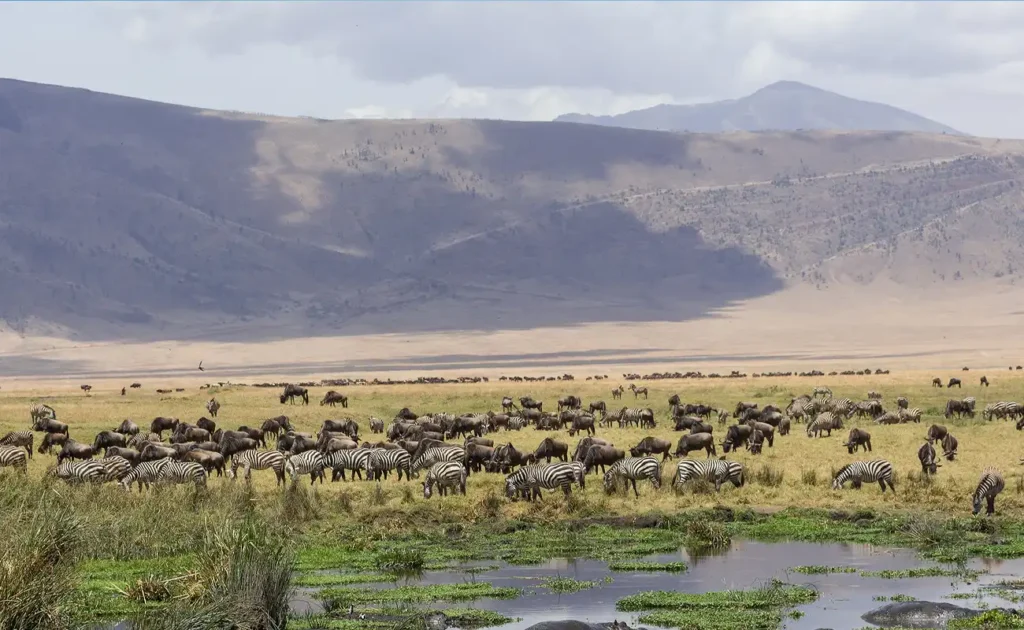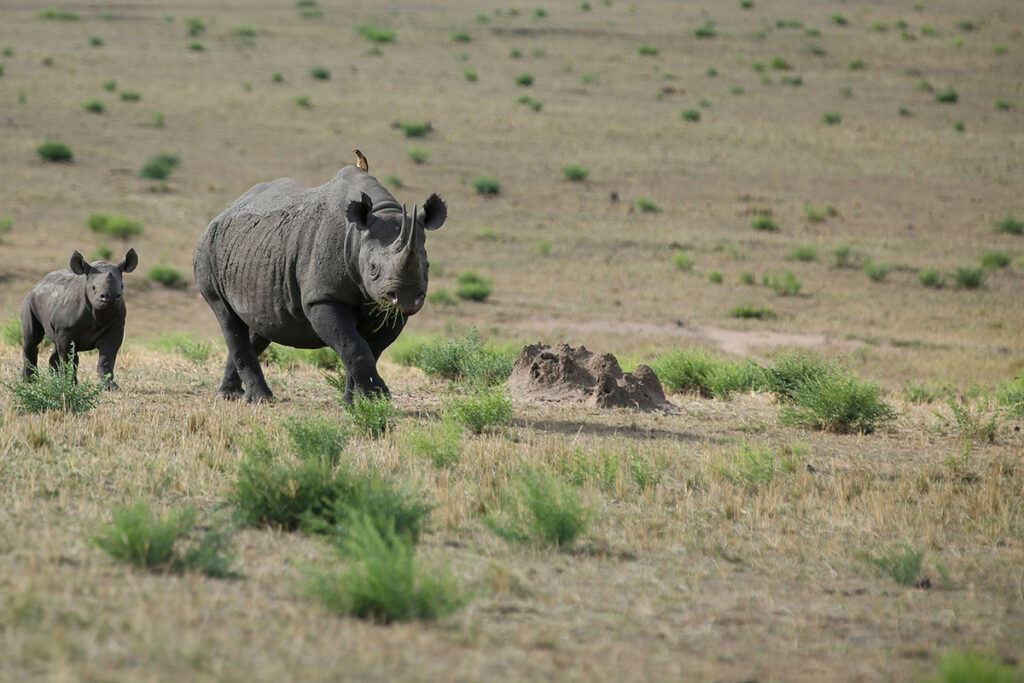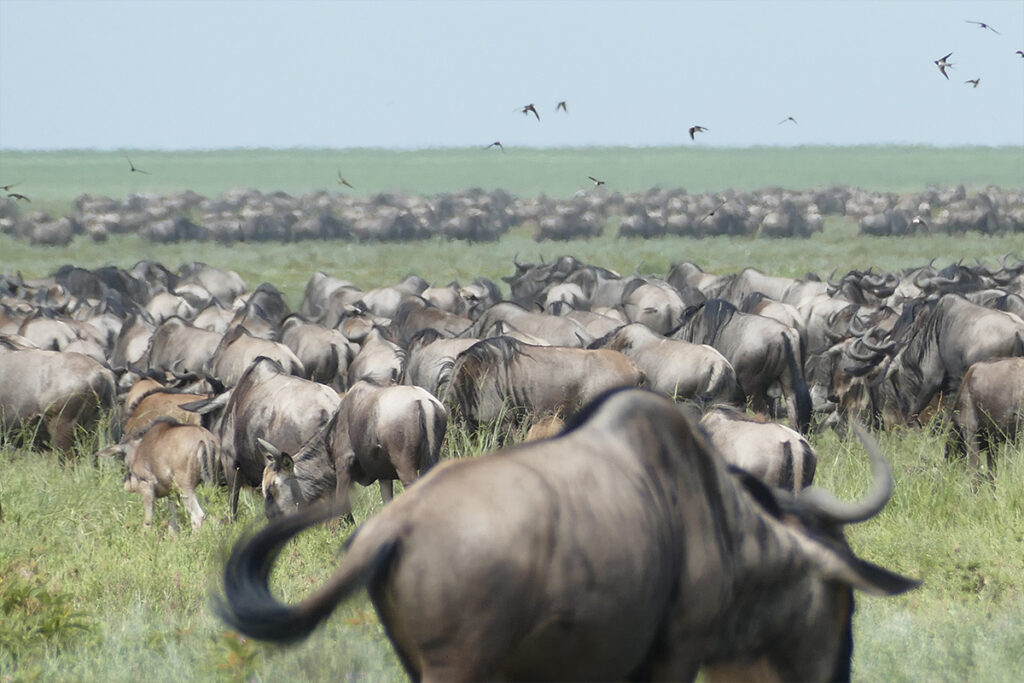Tour Overview
Get ready for a five-day adventure with a small group! We’ll be camping and exploring some of Tanzania’s famous parks.
Our journey starts in Serengeti, the biggest park known for the amazing migration of over a million wildebeest and 250,000 zebras. Then, we’ll visit Ngorongoro Crater for stunning views and easy animal spotting.
After that, we’ll head to Tarangire, similar to Serengeti but famous for its many elephants. Finally, we’ll check out Lake Manyara Park, famous for flamingoes and lions that climb trees.
You’ll have lots of time to see animals and relax in the parks. It’s perfect if you love wildlife!
Remember, we’ll be camping, but you can choose to upgrade to a lodge for extra comfort.
Destinations to Visit
Detailed Itinerary
Day 1: Arusha to Tarangire National Park
We’ll start our adventure by picking you up from your hotel. Once you’ve met our guide and chef, we’ll drive to Tarangire National Park, which is about a 2-hour drive away. This park is famous for its diverse landscape and is particularly known for its Ancient Baobab trees and large concentration of elephants – the biggest in the whole country! You’ll have the chance to observe the fascinating interactions within elephant families.
During our game drive through the park, we’ll keep an eye out for animals, especially predators like lions, cheetahs, and leopards, which can be harder to spot. We’ll also see plenty of herbivores like giraffes, wildebeests, and zebras.
After our adventure, we’ll head to the Tarangire River picnic site for lunch, where we’ll enjoy a beautiful view of the river and the animals. Don’t be surprised if small monkeys and baboons come to say hello – they’re just curious!
Once we’ve finished lunch, we’ll continue our game drive until around 4:30 pm, when we’ll exit the park. After the tour, we’ll head to our accommodation in Mto Wa Mbu, where we’ll set up camp for the night.
Meals included: Lunch, Dinner
Day 2: Mto wa mbu to Serengeti National Park
After breakfast, we’ll hit the road from Mto Wa Mbu to Serengeti, which is about a 6-hour drive with stops. As we pass through the Ngorongoro Conservation Area, we’ll take a brief break at the gate and viewpoint. From there, you’ll be treated to a breathtaking view of the crater, perfect for snapping some photos.
Next, we have the option to visit a Maasai village. This is a chance to learn about the culture of the Maasai tribe, known for their lion-chasing traditions and warrior heritage. While there, you can immerse yourself in their customs and maybe even sample some traditional foods.
Once we’re back on the road, we’ll head to Serengeti National Park. This vast park covers over 14,750 square kilometers and is famous for the wildebeest and zebra migration, with over 1.5 million wildebeest and 250,000 zebras working together for survival.
Our focus in Serengeti will be on Seronera, the heart of the park. We’ll arrive in the late afternoon and enjoy lunch before embarking on an exciting game drive. As the sun sets over Serengeti, we’ll have the opportunity to see wild animals up close, perhaps even witnessing a predator hunting. Later, we’ll head to the Seronera campsite for dinner and an overnight stay under the stars.
It’s going to be an unforgettable day filled with stunning views and incredible wildlife sightings!
Day 3: Serengeti to Ngorongoro
In Seronera, Serengeti National Park, our day begins bright and early at 6 am. After a refreshing cup of coffee to warm up, we’ll set out from the campsite for a morning game viewing adventure. As we explore the heart of the Serengeti, we’ll be treated to the stunning sight of the morning sun rising over the savannah. It may be a bit chilly in the morning, so make sure to dress warmly!
We’ll continue our game drive until mid-day, soaking in the sights and sounds of the Serengeti. Then, we’ll head back to camp for a full breakfast and lunch combined, also known as brunch.
After filling our stomachs, we’ll hit the road again, this time towards the Ngorongoro Conservation Area. Along the way, we’ll enjoy a game drive, allowing us to spot more wildlife as we journey towards our next destination.
Finally, as the day draws to a close, we’ll arrive at Ngorongoro Simba Campsite, where we’ll enjoy a hearty dinner and spend the night under the stars, surrounded by the beauty of the African wilderness.
Day 4: Ngorongoro Crater
On the final day of your Tanzania Safari, after enjoying breakfast and a picnic lunch, we’ll embark on a short drive to the descending gate of the Ngorongoro Crater. From there, we’ll descend down into the crater floor, which sits 650 meters deep.
During our half-day crater tour, we’ll have the opportunity to spot a variety of wildlife, including the elusive rhinoceros if we’re lucky. The crater is home to many permanent resident animals, as it boasts a consistent water source throughout the year. This makes it an ideal habitat, and many animals prefer to stay within the crater.
After our tour, we’ll ascend back up to the crater rim for lunch, enjoying the incredible views once more. Then, we’ll head back to camp to pack up our belongings.
From there, we’ll drive to Mto Wa Mbu for dinner and an overnight stay. It’s a fitting end to your safari adventure, allowing you to reflect on the amazing wildlife encounters and beautiful landscapes you’ve experienced during your time in Tanzania.
Day 5: Lake Manyara National Park to Arusha
After breakfast, we’ll head to Lake Manyara National Park, known for its abundance of flamingoes in the lake and its elusive tree-climbing lions, although they’re rarely seen.
During our game drive, we’ll have the opportunity to spot a variety of birds and other animals. With any luck, we may even catch a glimpse of the famous tree-climbing lions! We’ll also visit the hippo pool for a close-up look at these fascinating creatures and explore the hot spring.
Throughout the game drive, we’ll have the chance to see animals such as buffaloes, wildebeest, warthogs, vultures, eagles, monkeys, and more.
Meals included:
- Breakfast
- Lunch
Price Range
Prices are Per Person and Valid for Trips from December 31, 2024, to
December 31, 2025
| # People in Group: | 1 | 2 | 3,4-5 | 6+ |
| Budget Camping: | $1050 | $1000 | $950 | $890 |
| Mid-Range Lodging: | $1700 | $1600 | $1450 | $1400 |
Price Inclusions
| Included | Excluded |
|
|

